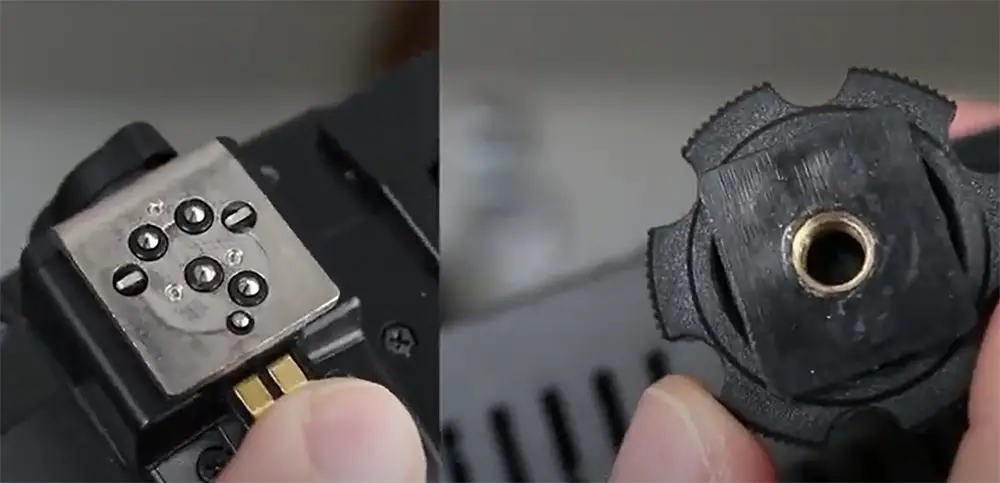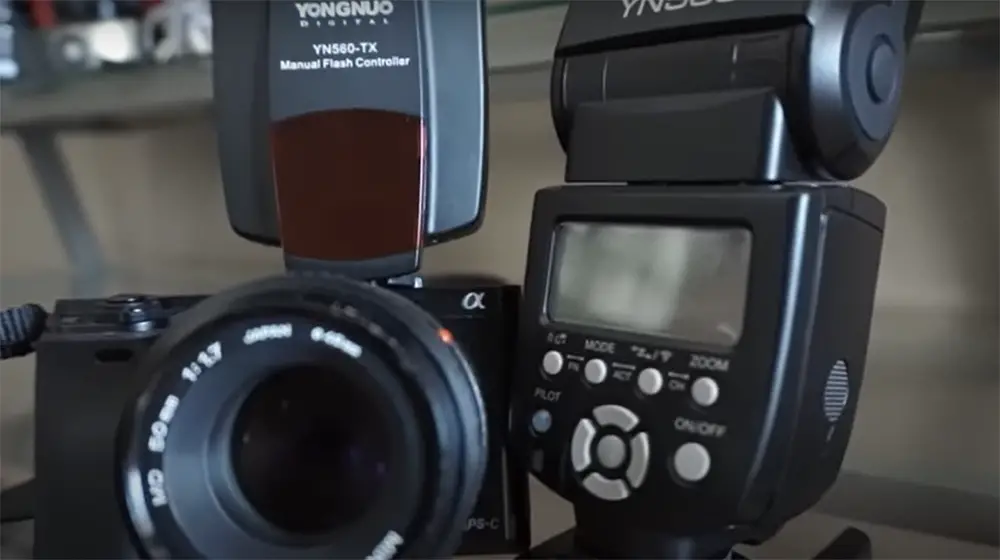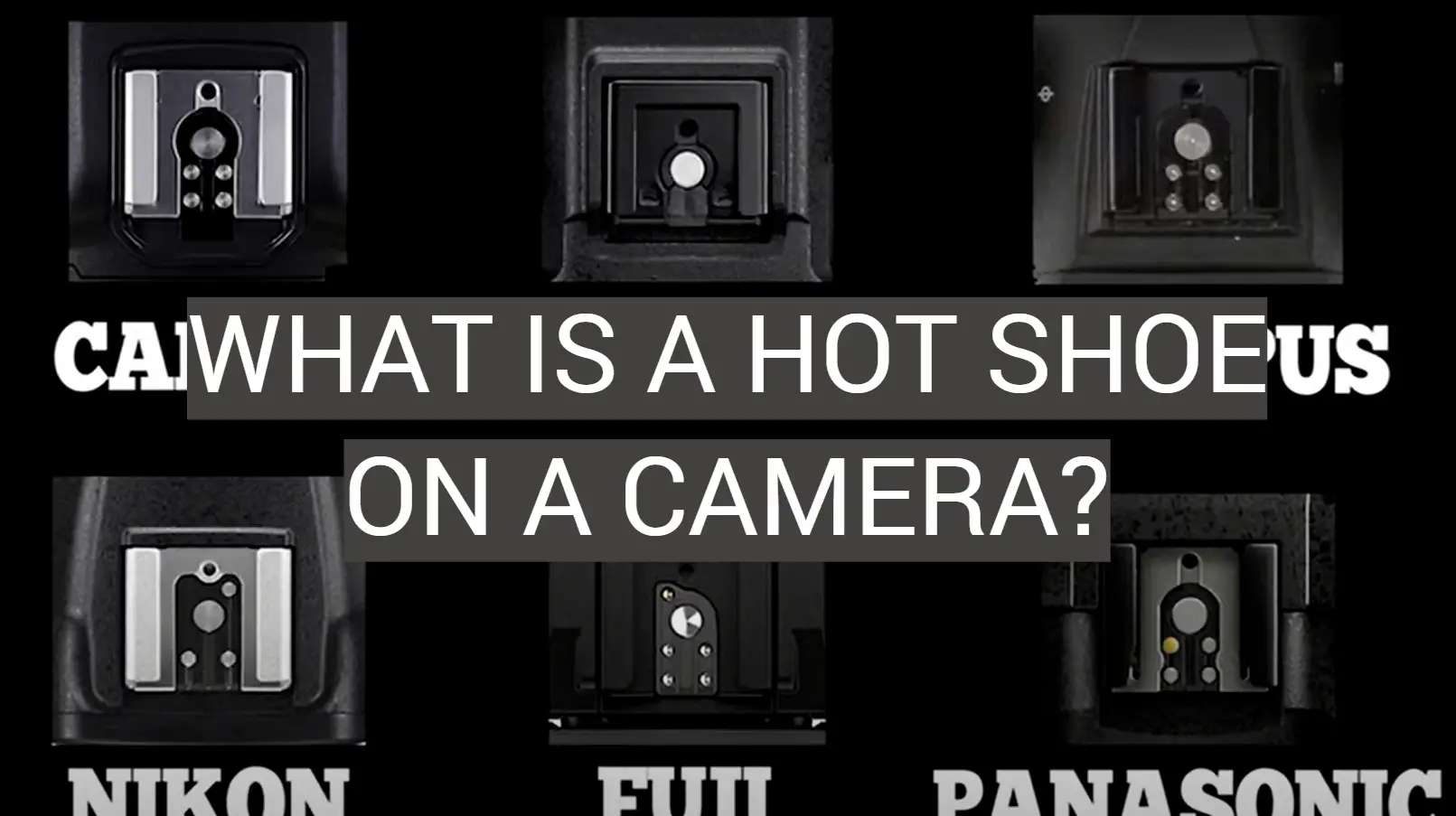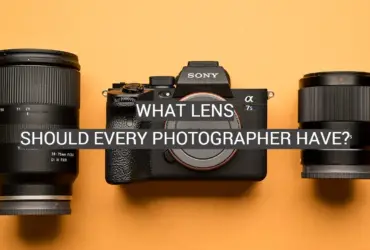A hot shoe is an essential camera accessory that all photographers should be familiar with. This little piece of metal allows you to connect a whole range of accessories to your camera, including flashes, microphones, and lights. This article will take a detailed look at what a hot shoe is and what it can do for your photography!
What is a Hot Shoe?
A hot shoe is a metal bracket found on the top of most digital cameras. The hot shoe is used to mount the camera’s flash unit. Most hot shoes also have a sync port that allows the camera to trigger an external flash unit.
The hot shoe was originally invented by Olympus in 1963, and it has been a standard feature on almost all digital cameras ever since.
Cold vs. Hot Shoe Adapters

There are two types of hot-shoe adapters- cold and hot. Cold adapters attach to the camera’s accessory shoe without electrical contact. This is useful for attaching an electronic flash that does not have a sync input. Hot adapters have both an electrical contact and a mechanical lock. This type of adapter is used when you want to trigger a flash that has a sync input. It is also useful for attaching other accessories such as remote controls and viewfinders [2].
Most modern cameras have a hot shoe, which allows you to attach an external flash unit or another accessory. The hot shoe consists of two parts: an electrical contact and a locking mechanism. The electrical contact triggers the flash unit or accessory when it is fired. The locking mechanism keeps the flash unit or accessory securely in place.
There are two types of hot shoes: those with an ISO standard foot and those with a proprietary foot. Canon, Nikon, Olympus, and Pentax use the ISO standard, while Sony uses a proprietary foot. Most third-party flash units and accessories are designed to work with the ISO standard.
If you’re using a flash unit or accessory with a proprietary hot-shoe, you’ll need to use an adapter. For example, the Canon Speedlite 430EX II has a proprietary hot-shoe, so you’ll need to use an adapter if you want to use it with a Nikon camera.
When shopping for a hot shoe adapter, be sure to get one that is compatible with your camera and the flash unit or accessory you want to use. Incompatible adapters can damage your camera or flash unit.
Compatible Hot-Shoe Accessories
Covers and diffusers
There are various types of covers and diffusers available in the market. The most popular ones are those that come with a built-in gel holder. This allows you to add color gels to your flash unit, which can be very useful for creative lighting effects. Other popular covers and diffusers include those that have a honeycomb grid pattern, which helps to focus the light from your flash unit into a more concentrated beam.

Flash Unit Brackets
Flash unit brackets are another type of hot-shoe accessory. They are used to mount your flash unit onto a light stand, tripod, or another support system. This can be very useful if you need to use your flash unit in a studio setting or for taking pictures with a long exposure time.
There are various types of flash unit brackets available in the market. The most popular ones are those that come with a swivel head, which allows you to tilt and rotate your flash unit for different lighting angles. Other popular types of flash unit brackets include those that have an adjustable arm, which can be very useful for getting the perfect lighting angle.
Radio Triggers
Radio triggers are another type of hot-shoe accessory. They are used to trigger your flash unit remotely, without the need for a physical connection. This can be very useful if you need to use your flash unit in a studio setting or for taking pictures with a long exposure time.
The most popular types of radio triggers are those that come with a receiver and transmitter. The receiver is attached to the hot shoe of your flash unit, while the transmitter is attached to your camera’s hot shoe. Other popular types of radio triggers include those that have an LCD screen, which can be very useful for setting up the perfect lighting conditions.
Video Accessories
The most popular types of video accessories are those that come with a built-in microphone, which can be very useful for recording high-quality audio. Other popular video accessories include those that have an LCD screen, which can be very useful for monitoring the recording process.
Tethering Cables
Tethering cables are another type of hot-shoe accessory. They are used to connect your flash unit to a computer or other device for remote control. This can be very useful if you need to use your flash unit in a studio setting or for taking pictures with a long exposure time.

The most popular tethering cables are those that come with a USB connection. Other popular tethering cables include those that have an HDMI connection, which can be very useful for connecting your flash unit to high-definition television.
GPS Receivers
GPS receivers as another type of hot-shoe accessory are used to trigger your flash unit remotely, without the need for a physical connection. This can be very useful if you need to use your flash unit in a studio setting or for taking pictures with a long exposure time.
The most popular types of GPS receivers are those that come with a built-in antenna. Other popular GPS receivers include those that have an external antenna, which can be very useful for getting the perfect signal strength.
Light Meter
A light meter is also a type of hot-shoe accessory. It is used to measure the amount of light that is available for taking pictures. This can be very useful if you need to use your flash unit in a studio setting or for taking pictures with a long exposure time.
The most popular types of light meters are those that come with a built-in sensor. Other popular types of light meters include those that have an external sensor, which can be very useful for getting the perfect reading.
Brackets
Brackets are another type of hot-shoe accessory. They are used to mount your flash unit onto a light stand, tripod, or another support system. This can be very useful if you need to use your flash unit in a studio setting or for taking pictures with a long exposure time.
The most popular brackets are those that come with a swivel head, which allows you to tilt and rotate your flash unit for different lighting angles. Other popular types of brackets include those that have an adjustable arm, which can be very useful for getting the perfect lighting angle.
Using External Flash with Hot Shoe Adapters

One way to use an external flash with your camera is to purchase a hot shoe adapter. This will allow you to attach the flash unit to the hot shoe on top of your camera. The advantage of this method is that it allows you to direct the light from the flash exactly where you want it. However, it can be more expensive than other methods and may not work with all types of cameras or flashes.
Another option is to use a wireless remote trigger, which will allow you to place the flash unit anywhere you want. This can be a great option if you want to bounce the light off of a nearby wall or ceiling. However, it’s important to note that not all wireless triggers are compatible with all cameras and flash units.
Finally, you can simply hold the flash unit in your hand or place it on a nearby surface. This is the cheapest and most versatile option, but it does require a bit more time to set up.
Light Intensity and Distance
One important factor to consider when using an external flash is the intensity of the light. The further away the flash is from your subject, the less intense the light will be. This is why it’s often necessary to use a diffuser when photographing close subjects. A diffuser will help to soften the light and reduce its intensity.
Light Direction
When using an external flash, it’s important to pay attention to the direction of the light. If you’re photographing a subject that’s backlit, you’ll want to point the flash unit towards the camera. This will help to illuminate the subject and reduce the amount of shadow in the image.
If you’re photographing a subject that’s in front of a bright light source, such as the sun, you’ll want to point the flash unit away from the camera. This will help to balance the exposure and prevent your subject from being overexposed.
Check more guides to learn photography basics:
Hot Shoe on a Camera: A Comparative Analysis
A hot shoe is a mounting point found on top of most modern cameras, especially DSLRs and mirrorless cameras. It serves as a universal interface to attach various accessories, mainly external flash units, but also other accessories like microphones, video lights, and electronic viewfinders. In this comparative analysis, we will explore and compare different indicators related to the hot shoe feature on cameras.
| Camera Model | Hot Shoe Type | Max Sync Speed (s) | Compatibility | Additional Features |
|---|---|---|---|---|
| Nikon D750 | i-TTL | 1/250 | Nikon Speedlights | AF Assist, Flash Control |
| Canon EOS R6 | E-TTL II | 1/200 | Canon Speedlites | AF Assist, Flash Exposure Comp. |
| Sony A7 III | ISO 518 | 1/250 | Sony External Flash Units | Multi-Interface Shoe |
| Fujifilm X-T4 | TTL | 1/250 | Fujifilm EF/XF Series | Sync Terminal, TTL Lock |
| Panasonic Lumix GH5 | Standard ISO | 1/250 | Panasonic Flashes | Bounce Adapter Support |
Explanation:
- Camera Model: This column lists different camera models from various manufacturers.
- Hot Shoe Type: Here, we specify the type of hot shoe used in each camera model, such as i-TTL for Nikon, E-TTL II for Canon, ISO 518 for Sony, TTL for Fujifilm, and Standard ISO for Panasonic.
- Max Sync Speed (s): This indicates the maximum synchronization speed (shutter speed) supported by the hot shoe when using an external flash unit. It is usually denoted in seconds (s).
- Compatibility: In this column, we mention the specific flash units or accessory brands that are compatible with the hot shoe of each camera model.
- Additional Features: This column highlights any extra functionalities or features associated with the hot shoe on each camera, such as AF (Auto Focus) Assist, Flash Exposure Compensation, TTL Lock, etc.
The comparison table helps us understand the differences in hot shoe implementations across various camera models. Photographers can use this information to determine which camera suits their specific needs, especially if they heavily rely on external flash or other accessories. Additionally, the table shows the variety of hot shoe types, highlighting the importance of selecting compatible accessories for each camera model.
FAQ
What does a hot-shoe adapter do?
A hot-shoe adapter is a simple and affordable way to add an extra flash to your camera. This can be very helpful when trying to take pictures in low-light conditions.
Hot shoe adapters come in different sizes, so it is important to check compatibility with your camera before purchasing one. They typically attach to the top of the camera via the hot shoe mount. Once connected, they provide power to the flash unit and allow it to be triggered by the camera’s shutter release.
What is a cold shoe in a camera?
A cold shoe is a mounting point on a camera that does not provide power to the attached accessory. Cold shoes are typically used for attaching accessories such as viewfinders, handles, or external microphones.
While most hot shoes are compatible with cold shoes, it is important to check your camera’s specifications before connecting any accessories. Some cameras have proprietary hot shoes that can only be used with specific accessories from the manufacturer.
How do you use a hot shoe flash on camera?
Using a hot shoe flash on your camera is a great way to improve your photos in low-light conditions. To use one, simply attach the flash unit to the top of your camera via the hot shoe mount. Once connected, the flash will be powered by the camera and can be triggered by the shutter release.
How does a hot shoe mount work?
A hot-shoe mount is a simple and convenient way to add an extra flash to your camera. This can be very helpful when trying to take pictures in low-light conditions.
Hot shoe mounts come in different sizes, so it is important to check compatibility with your camera before purchasing one. They typically attach to the top of the camera via the hot shoe mount. Once connected, they provide power to the flash unit and allow it to be triggered by the camera’s shutter release.
How do you connect hot shoes?
To connect a hot shoe to your camera, simply attach the flash unit to the top of your camera via the hot shoe mount. Once connected, the flash will be powered by the camera and can be triggered by the shutter release.
It is important to check compatibility with your camera before purchasing a hot shoe adapter. Some cameras have proprietary hot shoes that can only be used with specific accessories from the manufacturer.
What is the purpose of a hot shoe on a camera?
The hot shoe on a camera serves as a mounting point for various accessories, primarily external flashes. It allows photographers to attach compatible accessories securely and easily, enhancing their ability to control lighting conditions during photography.
What types of accessories can be mounted on a hot shoe?
The hot shoe is mainly designed to accommodate external flashes, but it can also be used to attach other accessories such as external microphones, video lights, and electronic viewfinders, depending on the camera model and brand.
How does a hot shoe facilitate communication between the camera and accessories?
The hot shoe typically has electrical contacts that enable communication between the camera and the attached accessory. This communication allows the camera to trigger the flash at the right time, control its settings, and receive important data from other compatible accessories.
Are all hot shoes the same across different camera brands?
While the basic concept of a hot shoe is consistent across most camera brands, there can be variations in design and compatibility. Some camera manufacturers may use proprietary hot shoe designs, making it essential to ensure that accessories are compatible with your specific camera model.
Can I use wireless triggers with a hot shoe?
Yes, you can use wireless triggers with a hot shoe. Wireless triggers enable you to remotely activate external flashes or other compatible accessories without a physical connection. This provides greater flexibility and creative control during photography sessions.
Can a damaged hot shoe be repaired?
In some cases, a damaged hot shoe can be repaired by professional camera technicians. However, depending on the extent of the damage, it might be more practical and cost-effective to replace the hot shoe entirely. If you encounter issues with your hot shoe, it’s best to seek assistance from an authorized service center.
Useful Video: What is a Hot Shoe on a Camera?
Conclusion
In conclusion, the hot shoe is an essential camera accessory that allows you to attach external flash units and other accessories. Without it, your photography would be severely limited. So, next time you’re out shooting, take a moment to appreciate this little piece of engineering that makes all the difference. The hot shoe is truly a game-changer in the world of photography.
References
- https://expertphotography.com/hot-shoe-photography/
- https://themainmuseum.org/photography/hot-shoe-vs-cold-shoe/












Leave a Reply